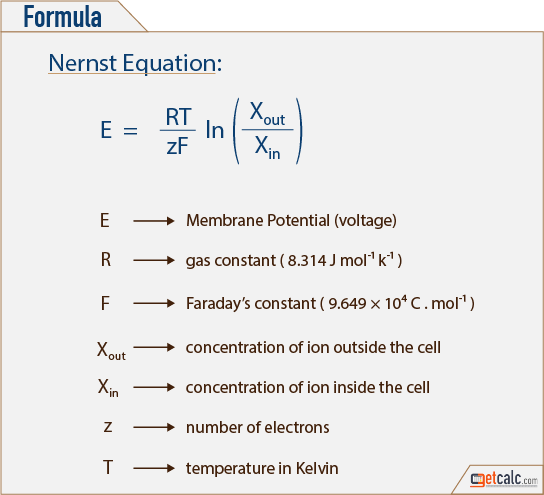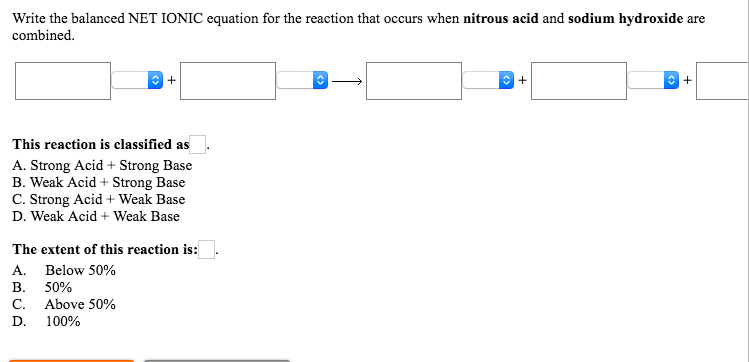

Start by counting the atoms of elements that only appear once on each side of the equation and balance those first.Balance the formula equation using the law of conservation of mass to write the chemical equation.They only show the compounds in their chemical formula. Using the word equation, write a formula equation by rewriting all of the compounds into their chemical formula.
#BALANCED NET IONIC EQUATION CALCULATOR FULL#
This means that word equations do not show the full picture of the reaction.

Here’s an example of a reaction in which methane burns in air to produce carbon dioxide and water vapor:ĬH 4 (g) + 2O 2 (g) → CO 2 (g) + 2H 2O (g)Īs you can see, both sides of the equation each have 1 carbon atom, 4 hydrogen atoms, and 4 oxygen atoms. The law applies to balancing chemical equations because there must be the same relative amounts of each compound on both sides of the equation. This means that there must be equal amounts of each compound before and after a chemical reaction takes place. The law of conservation of mass states that matter (or atoms) are neither created nor destroyed in chemical reactions. As long as the ratios are constant, the equation can be correctly rewritten with any proportional coefficients (such as 2:4:2:4, 3:6:3:6, etc.), though it is common practice to use the smallest whole number coefficients. Because they are relative quantities, the numbers can also be interpreted as ratios in the example above, the ratio would be 1 CH 4 : 2O 2 : 1 CO 2 : 2H 2O. The coefficients of each molecule or compound represent the relative quantity of the element in the reaction in moles or numbers of molecules. In total, there are 6 oxygen atoms (3 molecules of NO 2 and 2 oxygen atoms per 1 molecule of NO 2.) In a molecule 3NO 2, the coefficient is 3 (there are 3 molecules of NO 2), and the subscript of oxygen is 2 (there are 2 oxygen atoms in 1 molecule of NO 2). The same molecules having different coefficients (for example 2H 2O and 5H 2O) are the same compounds, present in different amounts. For this reason, when balancing chemical equations, subscripts of molecules cannot be changed. H 2O 2) have different chemical compositions, meaning they are not the same compound. Molecules in which the subscripts of atoms of the same elements are different (for example H 2O vs. Only coefficients of molecules can be changed in balancing equations. Coefficients represent how many molecules of a specific chemical compound are present in the reaction. Subscripts represent how many atoms of each element are present in a molecule. There are two types of numbers in chemical equations: subscripts and coefficients. Retrosynthetic arrow (⇒) shows potentially ways to get from reactants to products.Theoretical arrow (⇢) shows a theoretical process.Resonance arrow (↔) shows that two or more species are resonance structures of each other.


Forward arrow (→) shows a general reaction.The yields arrow, however, can come in a few different styles: The reactants and products are listed as multiple molecules added together, and this is the case for any chemical equation. Products are the end results, or compounds produced, in a chemical reaction. When reactants undergo a chemical change, they yield products. In reactions, “yield” means to “produce” or “form” and is usually represented by an arrow. Reactants are compounds or elements that are needed in the reaction and that undergo chemical change during the reaction. There are 3 basic parts to a chemical equation: reactants, products, and the “yields” arrow. Balancing chemical equations can help you determine the accurate ratio of compounds involved in a reaction! Fundamentals of a Chemical Equation 1. Chemical equations show the relative molar quantities and identities of different reactants and products. A chemical equation represents a chemical reaction using symbols and numbers.


 0 kommentar(er)
0 kommentar(er)
